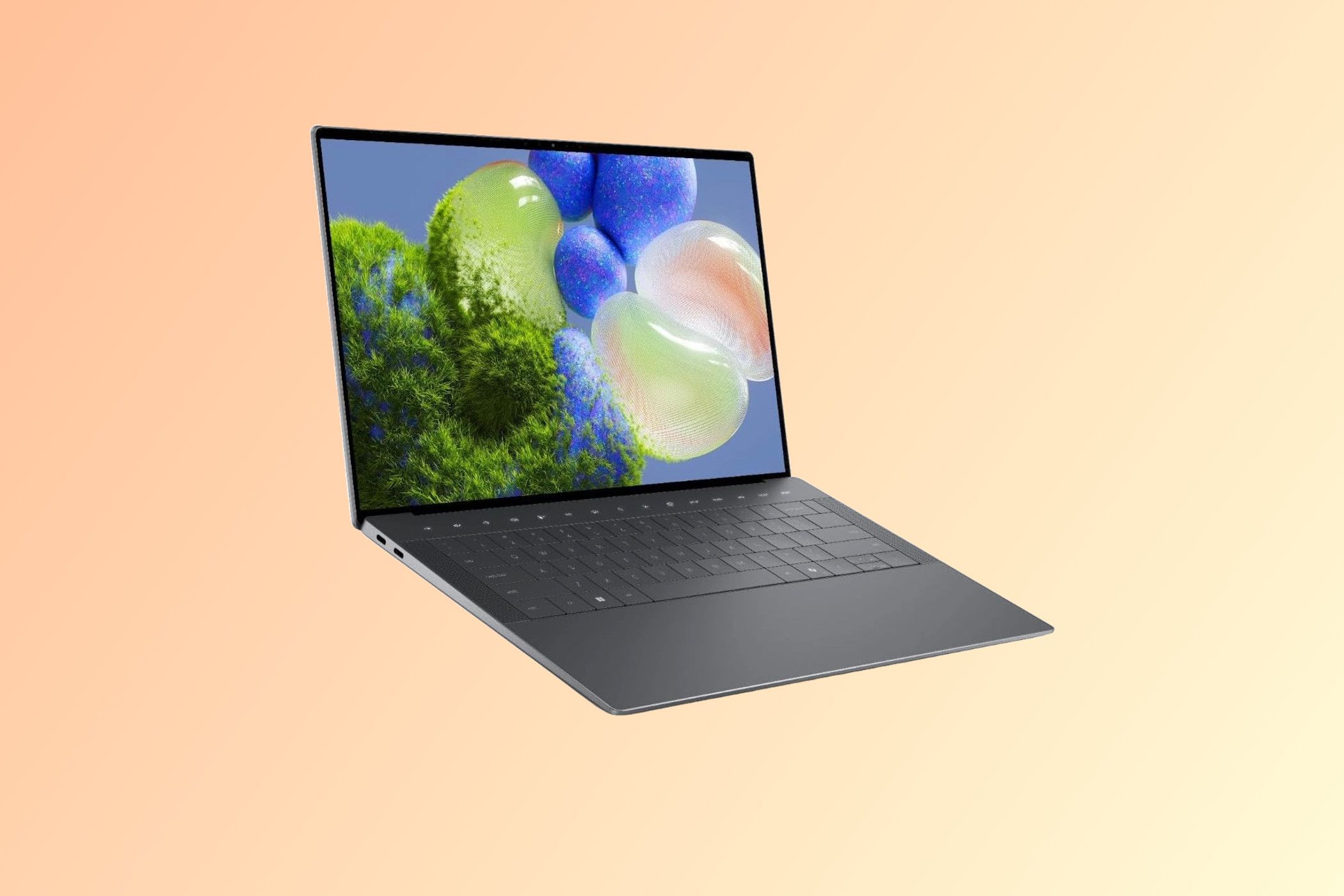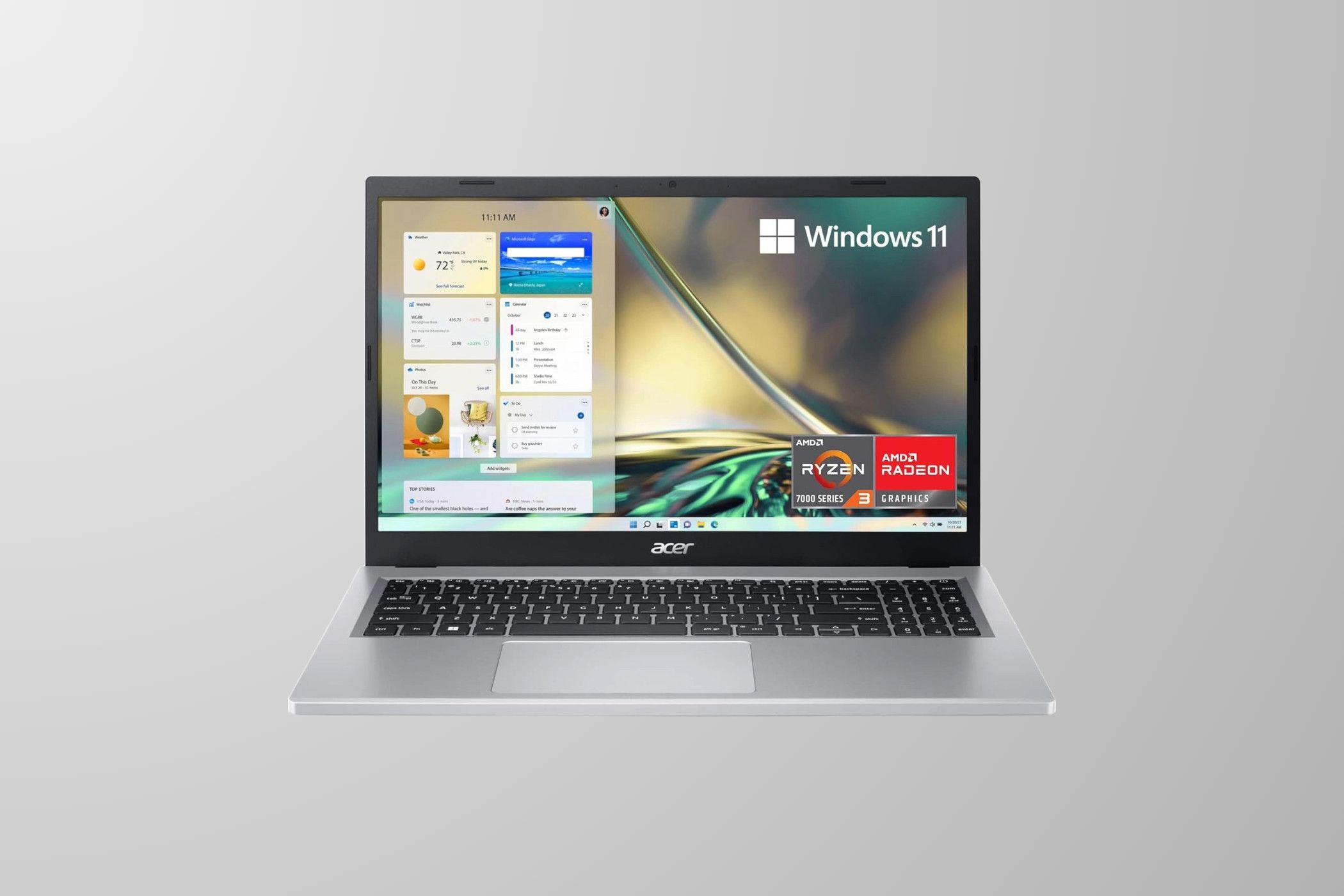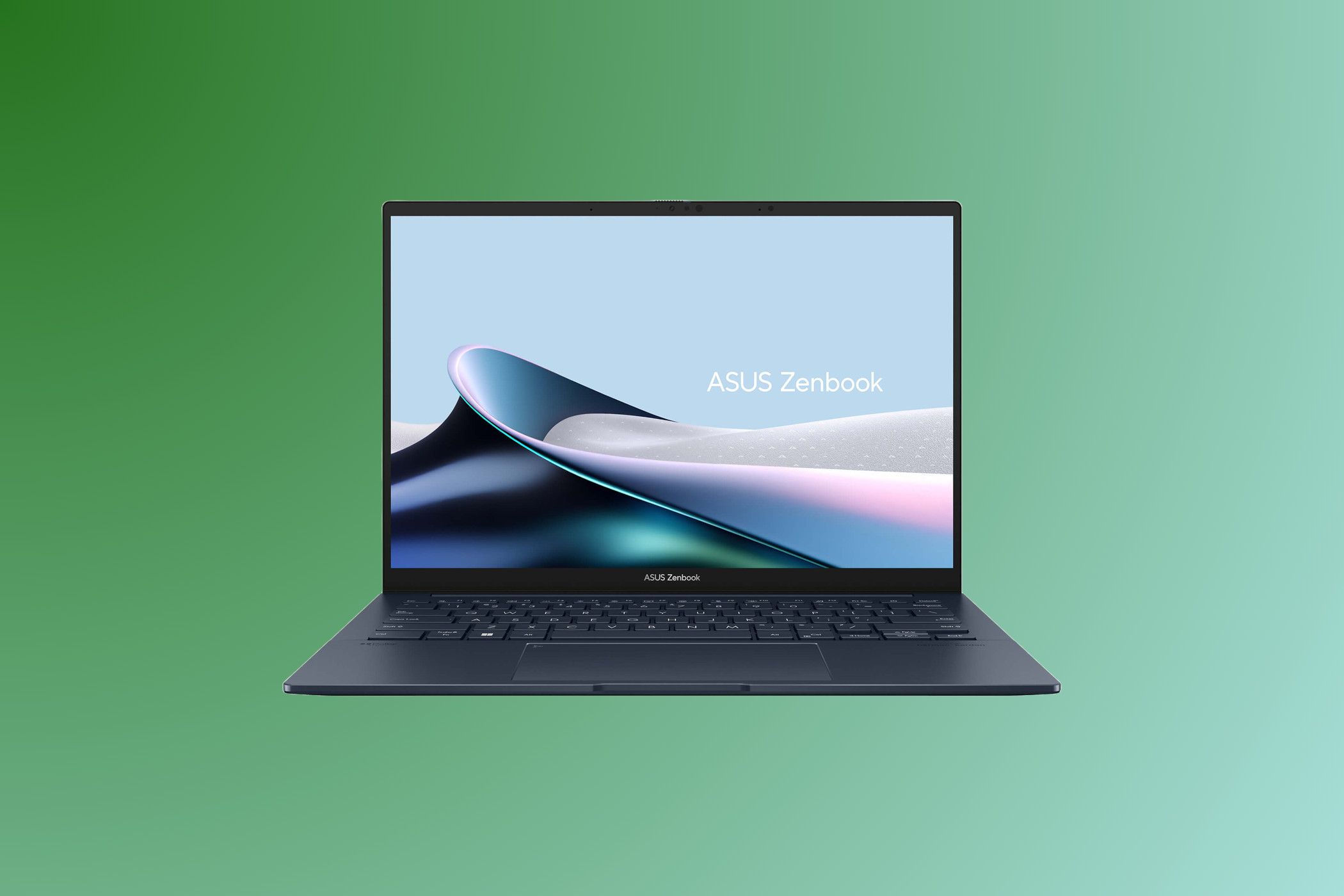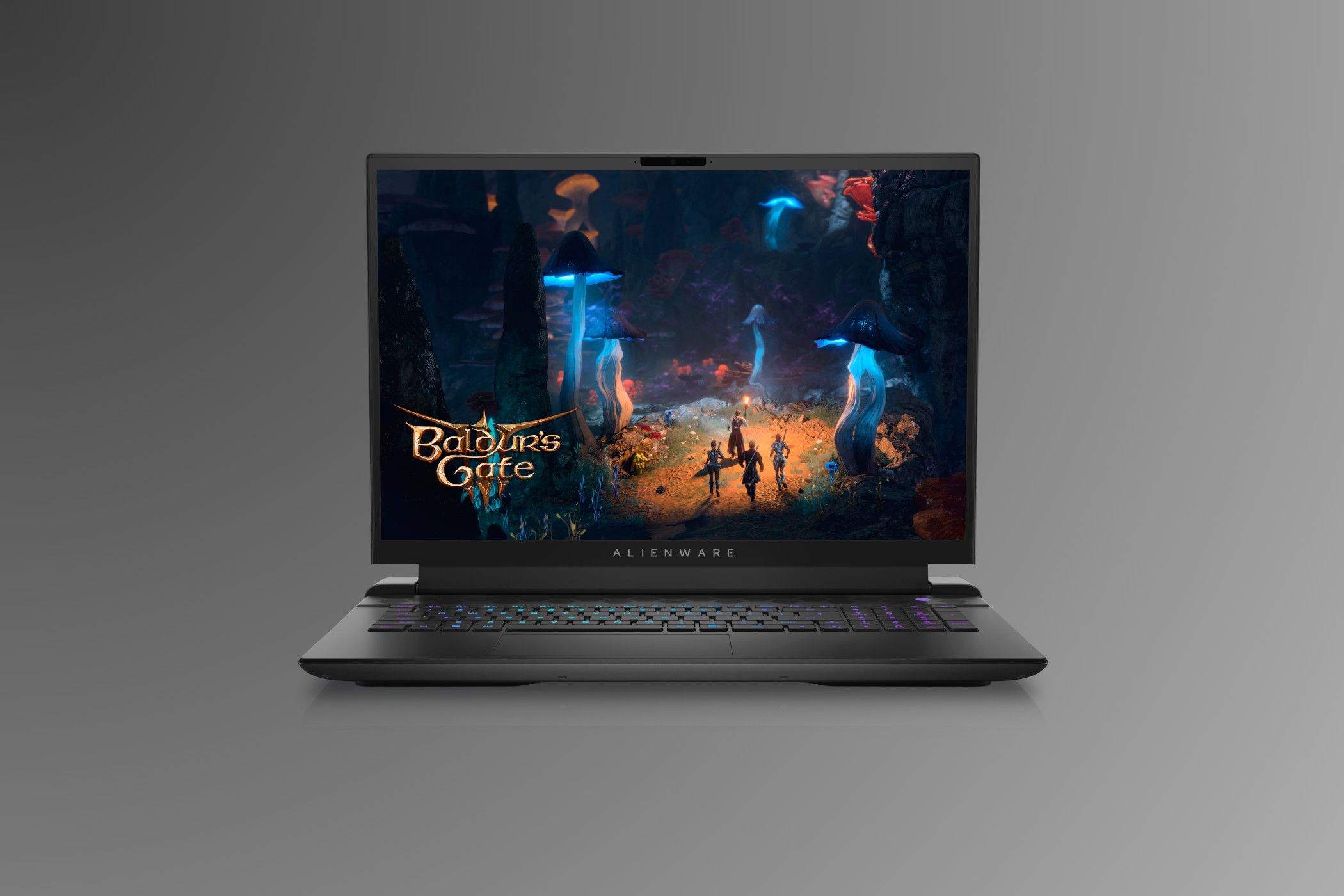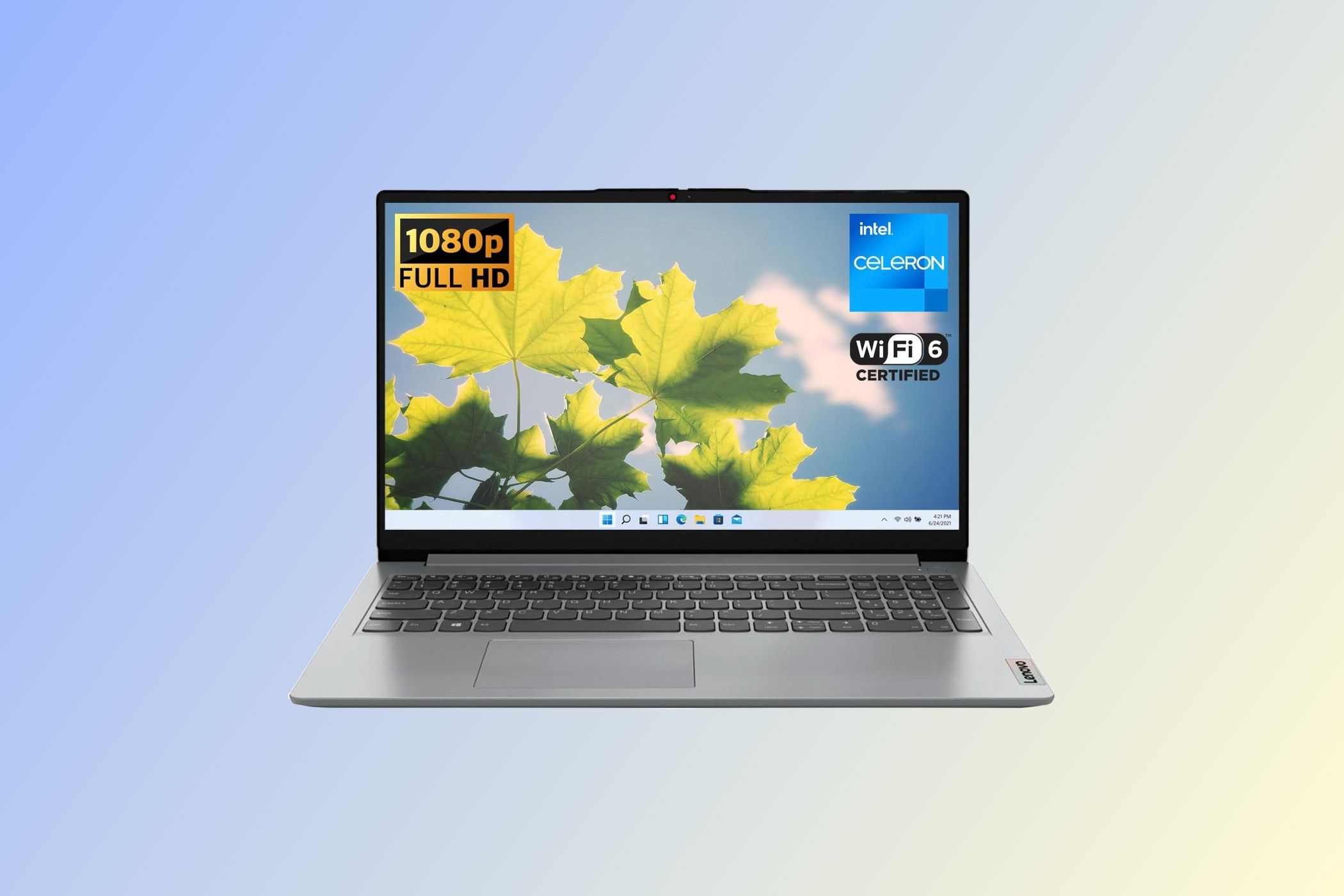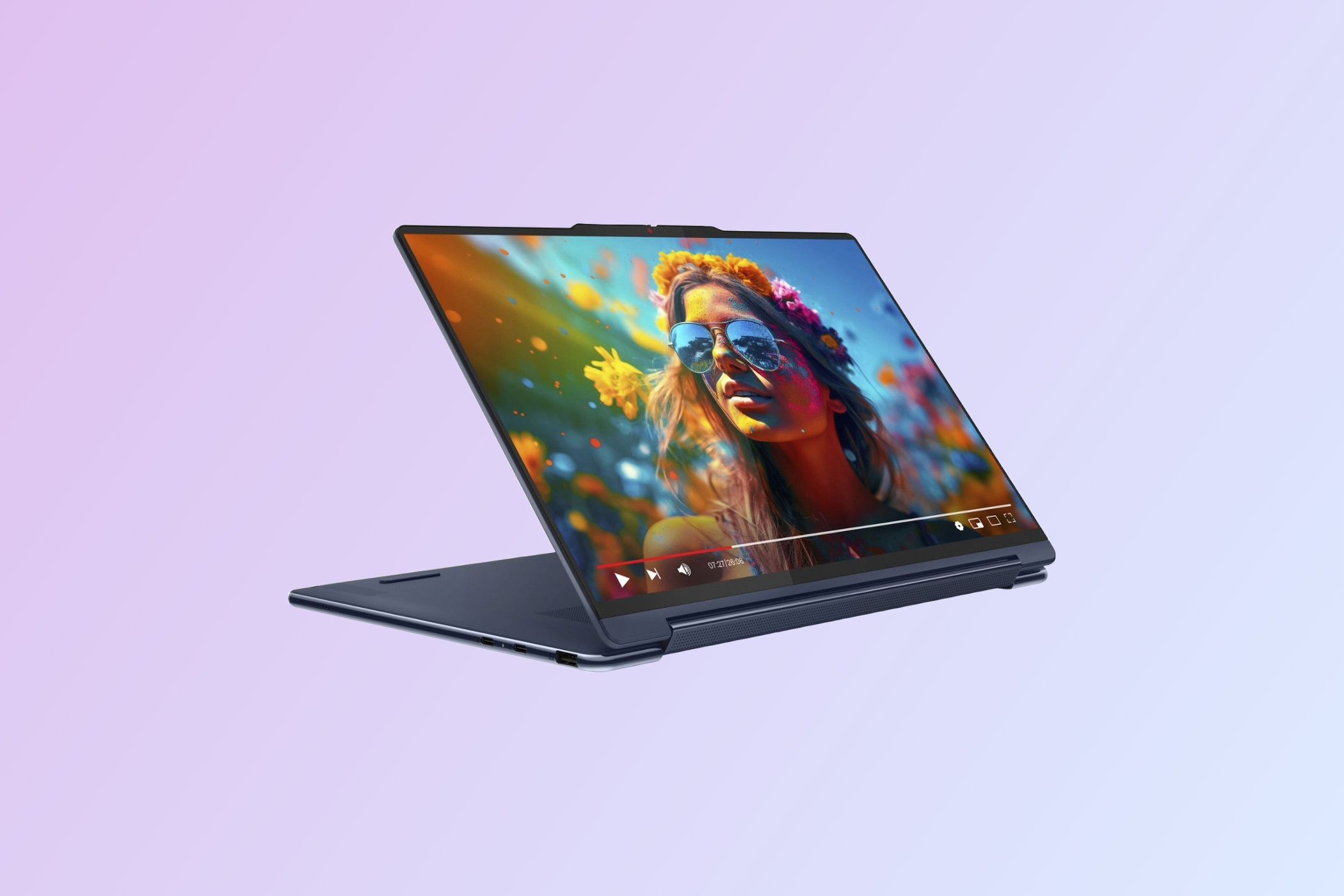Finding the perfect laptop makes your computing life both smoother and easier, but it can be a tricky process. Once you know the right areas to focus on, finding the right laptop for you is simple.
What to Look For With a Laptop in 2024
The first thing you’ll want to consider when buying a new laptop is the form factor, which also means you’ll need to consider the screen size. The larger the screen, the larger and heavier the laptop, which means less portability. This means different things for a laptop that sits on a desk all day compared to a laptop you’ll take everywhere.
Once you’ve decided on a screen size, you’ll also need to choose the display technology. You may not be very particular about your display if you use a laptop mainly to edit documents or coding. That said, color accuracy is paramount for video and photo editing as well as numerous other creative fields.
You’ll also need to consider how important a touchscreen is to you. Again, for coding and most documents, a touchscreen may be nice to have but isn’t essential. That said, if you plan on using your laptop as a tablet or you want to draw on your screen with a stylus, this could be a dealbreaker.
Once you’ve decided on your laptop’s form factor and overall size, you’ll need to think about how you plan to use it. Battery life is important for any laptop, but it will be more important if you’re frequently on the go. If your laptop spends most of the day on your desk, it’s okay to sacrifice some battery life in favor of other features.
Of course, you’ll also need to consider how powerful you need the hardware to be. For light web browsing and casual document editing, most computers will work. You’ll likely need more power for more demanding workloads like editing photos or video or compiling software. That said, the price-to-performance ratio of many laptops is quite good these days, especially if you’re only considering productivity.
Gaming performance comes at a premium for laptops. You can find plenty of affordable gaming laptops for sale, but if you want to make sure you can play the latest games on the highest settings, it will cost you. While the highest-end PC gaming experiences remain exclusive to desktop PCs, gaming performance on laptops is consistently catching up, so if you want high-end gaming on the go, it may be worth the investment.
After carefully considering all of the above, then it’s time to consider any extra features a laptop might have. Dolby Atmos audio, for example, is a frequent addition to more multimedia-centered laptops, but it’s not something you should ever base a purchasing decision on.
|
Pros |
Cons |
|---|---|
|
Sleek and slim design for the screen size |
Invisible touchpad won’t be for everyone |
|
Great-looking OLED display |
Touch function keys can be a problem |
|
Solid keyboard performance |
|
|
Plenty of power in a portable form factor |
For years, the Dell XPS 13 was, at least to many people, the perfect Windows laptop. While the XPS 13 Plus attempted to move forward from that venerable laptop, it fell short. On the other hand, the Dell XPS 14 takes all the right cues from the Plus while keeping much of what made the XPS 13 so beloved.
The display is one of the first things you’ll notice using the XPS 14. While the 3200 x 2000 OLED touch display is the more premium and desirable option, the 1920 x 1200 non-touch display is a handy way to save money if you don’t need the bleeding-edge technology. Regardless of your display choice, you get an Intel Core Ultra 7 155H CPU and either Intel Arc integrated or GeForce RTX 4050 graphics.
Dell’s XPS 14 keeps the invisible touchpad and the touch function keys from the XPS 13 Plus, which are sure to be divisive choices. The invisible touchpad takes getting used to, but the function keys may never feel right, depending on how much you like or dislike capacitive buttons. The keyboard, on the other hand, makes for an excellent typing experience.
The battery is a six-cell, 69.5Wh unit, and in the case of the XPS 14, it provides solid battery life. You won’t be blown away by how much life you get out of the battery, but you won’t find yourself constantly searching for the charger either.
In an increasingly uncommon move, at least for companies not named Apple, the XPS 14 is available in multiple color options. There are only Platinum and Graphite options, but it’s still nice to have some choice. In addition to integrated or discrete graphics, you can choose between 16 and 64GB RAM and 512GB and 4TB onboard storage.
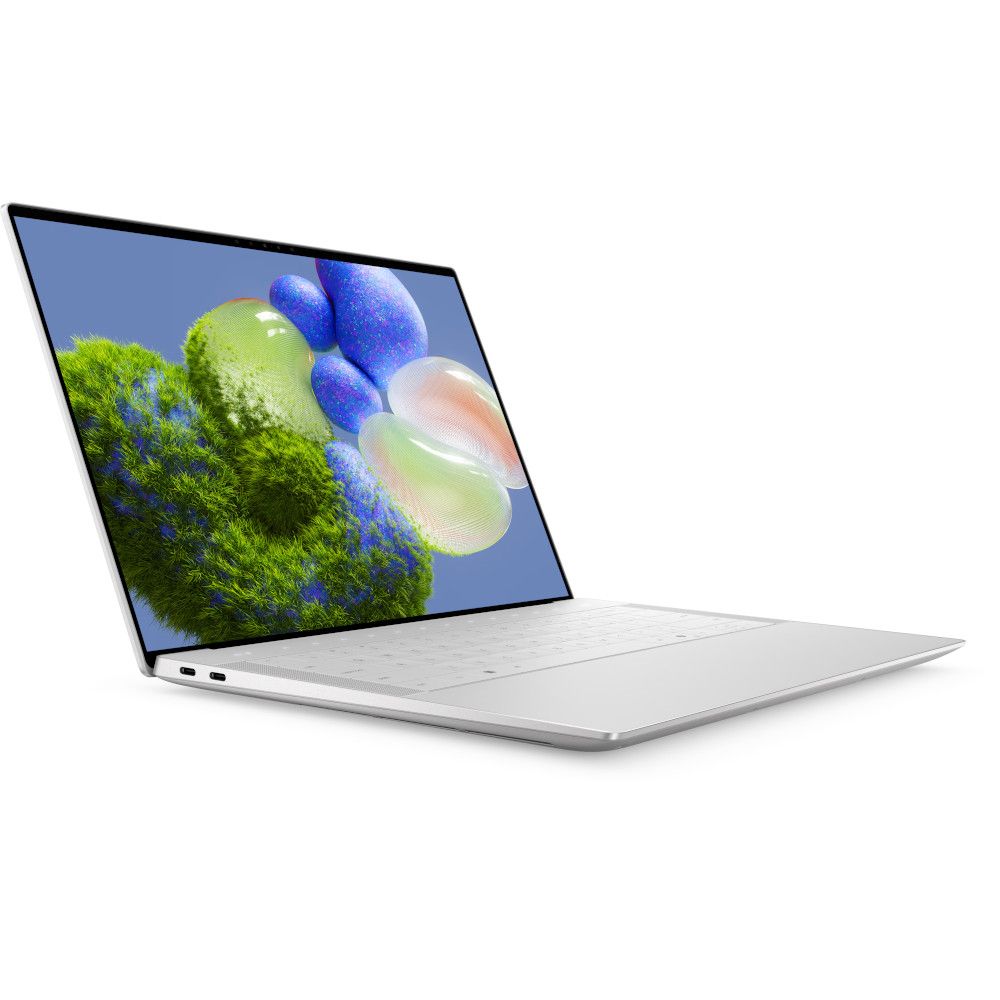
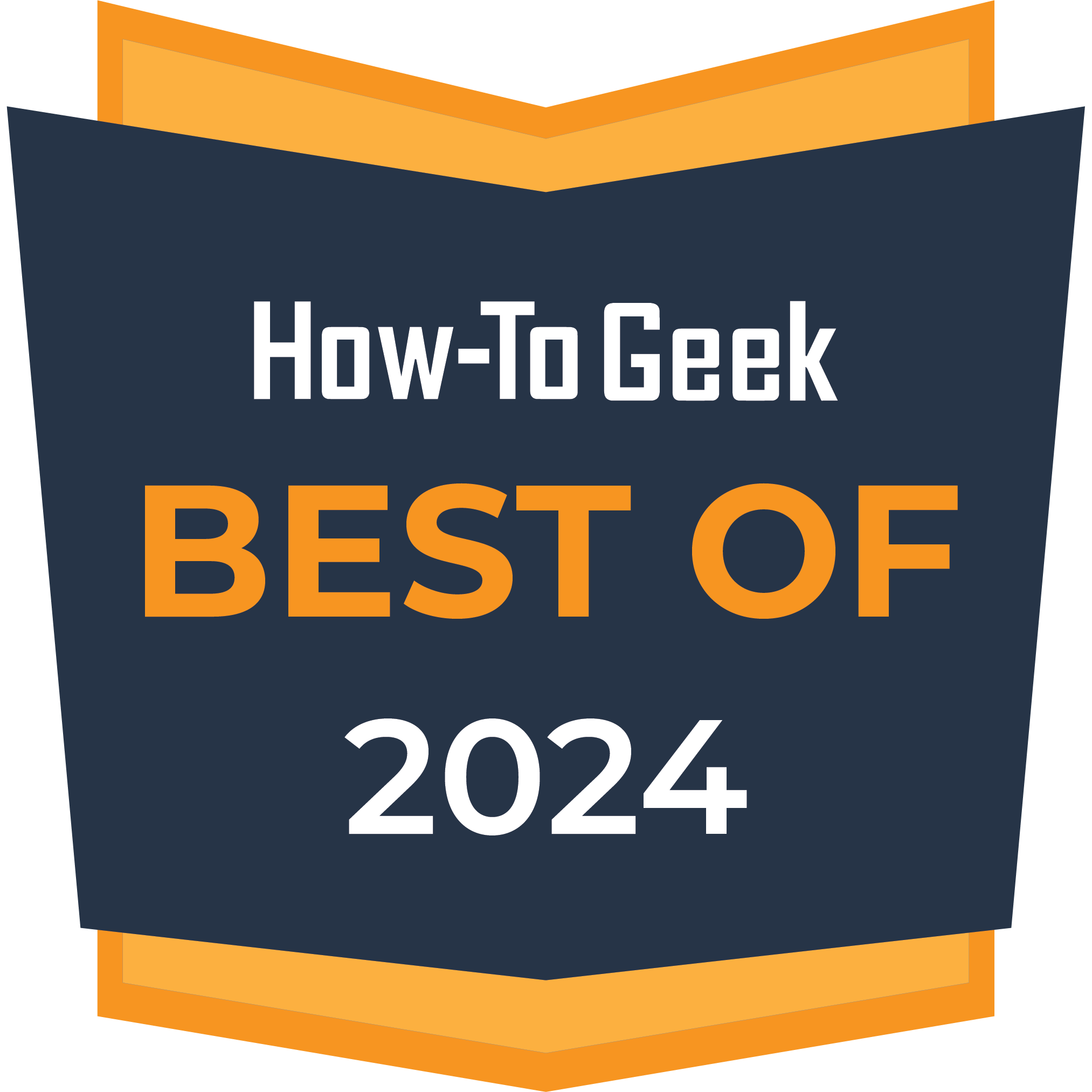
Best Laptop Overall
Dell XPS 14
The Dell XPS 14 takes most everything that made its 13-inch predecessor great and updates it with a larger OLED display and a sleek, slim exterior. While the touchpad may take some getting used to, the keyboard should have you feeling right at home.
|
Pros |
Cons |
|---|---|
|
Plenty of room on the keyboard, including a number pad |
Storage on the base model is lacking |
|
Good performance for web apps and document editing |
No gaming performance to speak of |
|
Surprisingly decent battery life |
Shopping for a laptop on a budget nearly always means making a few sacrifices or at least balancing which features are the most important to you. This is true of the Acer Aspire 3, but in the case of this affordable laptop, you get to choose which tradeoffs you’re willing to make. Even at the base-level configuration, the laptop has plenty to offer for the price.
Budget laptops often feel distressingly outdated, but everything about the Aspire 3 seems modern. While the CPU in the base model is a fairly low-powered Ryzen 3, at least it’s a 7320U, which is relatively modern. You get Wi-Fi 6 instead of some older version, which you’ll often see on budget laptops.
Of course, you can’t expect top-level performance from this level of hardware. While the base model of the Aspire 3 features a respectable 8GB RAM, storage is limited to 128GB, which doesn’t leave much room for installing apps or storing data. That said, the webcam features AI noise reduction, and the fan has been improved over previous models, so this should be perfect for light-duty productivity.
Battery life is surprisingly decent, especially for a budget laptop. You won’t want to take a trip and leave the AC adapter at home, but you should be able to get through a standard workday with plenty of battery life to spare. It’s also worth pointing out how spacious the keyboard is, something made possible by the 15.8-inch display.
We’re basing most of our impressions here on the base version of the laptop with 8GB RAM and 128GB storage. That said, you don’t need to spend much more on a 16GB RAM and 512GB storage version, as the price still stays well below $500.
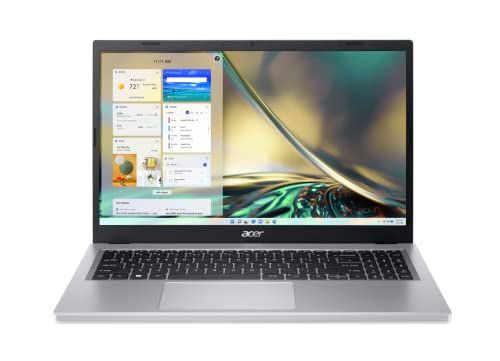

Best Budget Laptop
Acer Aspire 3
$330 $400 Save $70
Whether you opt for the base model or choose a few upgrades, the Acer Aspire 3 is plenty of laptop for a modest price. While it’s not a powerhouse, it performs well for everyday tasks and has battery life to spare.
|
Pros |
Cons |
|---|---|
|
Crisp, colorful OLED display |
No onboard SD card slot |
|
Excellent battery life |
|
|
Lightweight, compact build |
|
|
Good keyboard |
While they may not be the best-known, ASUS Zenbooks have quietly been some of the best productivity-focused laptops you can buy for years now. They typically have excellent build quality for the price, solid keyboards, and can reliably withstand years of use. The ASUS Zenbook 14 OLED continues this tradition but adds a stunning OLED screen.
The Zenbook 14 OLED is powered by an Intel Core Ultra 7 Processor 155H and, like our overall pick, features Intel’s AI Boost NPU for powering AI features. Intel’s Arc-integrated GPU handles the graphics, and thanks to the onboard 32GB RAM, you shouldn’t need to worry about using memory-intensive apps like photo and video editing software.
As the number in the name implies, the screen is 14 inches, with a resolution of 2880×1800. That’s a 16:10 aspect ratio, which is slightly taller than the typical 16:9 and better for nearly all productivity use cases outside of video. Don’t forget that it’s an OLED panel, so it’s plenty bright with a max brightness of 500 nits, 100% DCI-P3 color gamut, and a 1,000,000:1 contrast ratio.
The Zenbook 14 OLED gets its juice from a four-cell, 75Wh onboard battery. That may not sound like much, but ASUS claims this gives the Zenbook a 15-hour maximum battery life. Even if you take a few hours off the top, that’s still a full workday without needing to top up until the day’s end.
When it comes to available configurations, you don’t have much in the way of choices. Actual hardware configuration changes are nowhere to be found, and the laptop only comes in one color: Ponder Blue. That said, at least it makes deciding whether this is the right laptop for you an even easier choice.
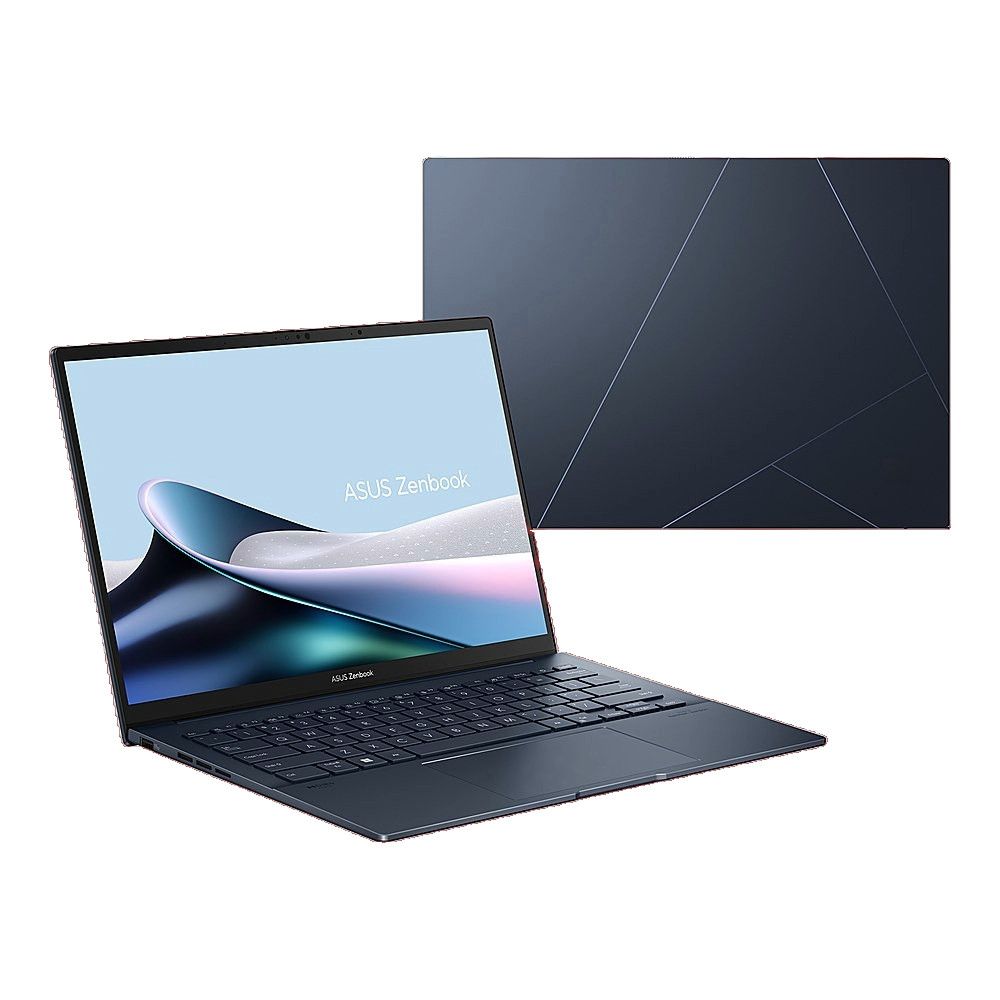

Best Laptop for Productivity
ASUS ZenBook 14 OLED
The Zenbook line has been known for solid, reliable laptops for years, and the ASUS Zenbook 14 OLED’s display and productivity performance show the line is only getting better over the years. The portability and battery life will help you get work done anywhere, any time.
|
Pros |
Cons |
|---|---|
|
Absolutely stunning gaming performance |
Higher-end configurations are expensive |
|
Cherry MX mechanical keyboard is a great upgrade |
Not the most portable |
|
165Hz high-resolution display |
|
|
Great look for a gaming laptop |
There are two types of gaming laptops. There are thin, light models that offer better performance than most laptops but with compromises, and then there are the full-blown desktop replacements. The Alienware m18 R2 Gaming Laptop is in the latter camp, and it’s packed full of enough power and features to make you forget about desktop PCs altogether.
Even if you opt for the base model, you’ll still get an Intel Core i7 14650HX CPU alongside a GeForce RTX 4060 GPU with 8GB GDDR6 memory. At the top end, you get an Intel Core i9 14900HX and an RTX 4090 with 16GB onboard memory. Regarding RAM, the m18 R2 starts at 16GB and is available with up to 64 GB. Storage options range from 1TB to 8TB M.2 SSD storage.
As the name somewhat implies, you get an 18-inch display, which is on the large side for a laptop, so it’s not the most portable laptop around. You can choose between a 2560 x 1600 resolution with a refresh rate of 165Hz or 1920 x 1200 with a refresh rate of 480Hz. Either way, you get 100% DCI-P3 coverage, complete with NVIDIA G-Sync support.
Things get more interesting when it comes to the keyboard. The basic option is Alienware’s M-series keyboard, which offers per-key backlighting. That said, you can opt for an Alienware CherryMX ultra low-profile mechanical keyboard, which also features per-key backlighting but a more tactile mechanical feel, which is great for gaming.
The battery is a six-cell, 97-Wh model powered by a 280-watt adapter. Still, this is a gaming laptop, so don’t expect stellar battery life. Don’t expect a ton of color options, either. The Alienware m18 R2 is only available in the Dark Metallic Moon, which, fortunately, is a great-looking finish.
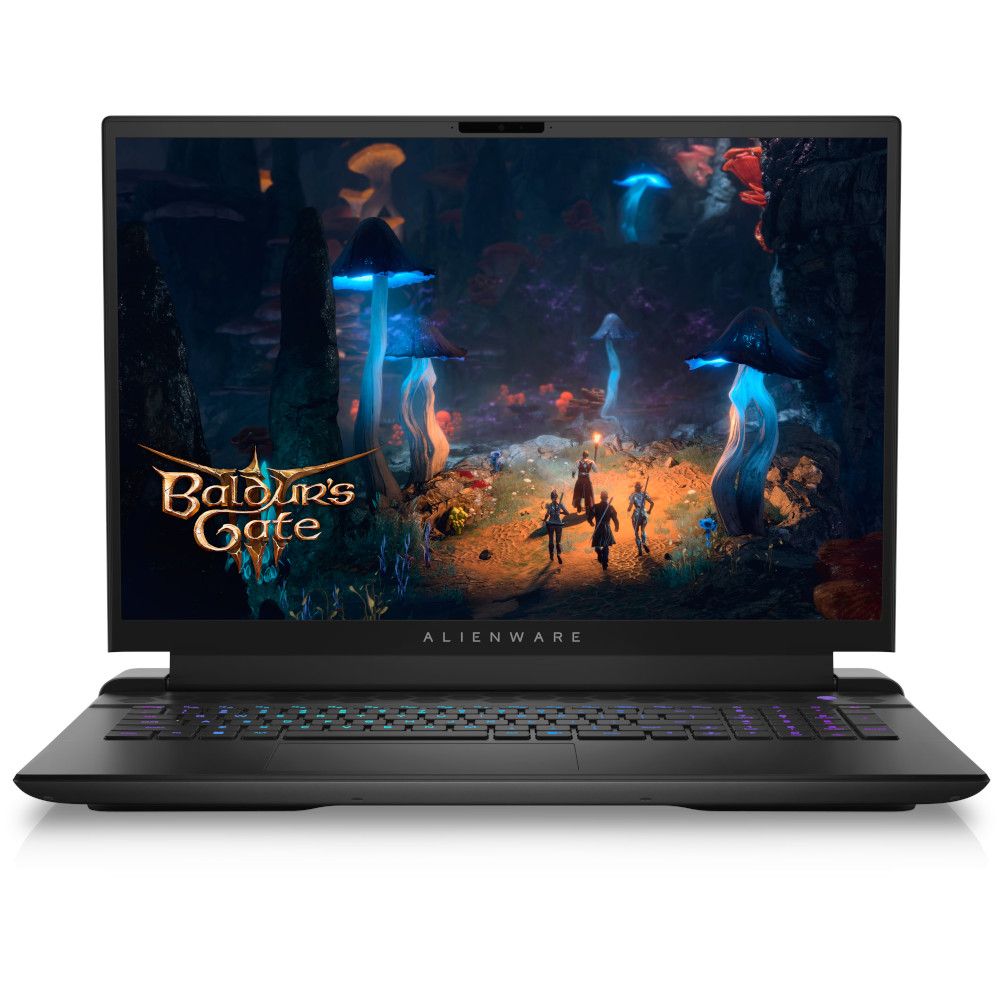

Best Laptop for Gaming
Alienware m18 R2
The Alienware m18 R2 gaming laptop doesn’t have any pretensions around being thin, light, or portable, so all that leaves is pure gaming performance. Fortunately, there’s plenty of it to be had, even on the base model.
|
Pros |
Cons |
|---|---|
|
Very affordable starting price |
Performance isn’t the best |
|
Modern connectivity |
A bit much for younger kids |
|
Webcam features a privacy shutter |
|
|
Up to nine hours of battery life |
Our pick may seem like a bit more of a proper computer than the Chromebooks you typically see recommended for kids, but that is on purpose. Kids are growing up with more access to computers than ever before, and giving them something they can grow with over time, like the Lenovo IdeaPad 1 Gen 7 (15-inch, AMD) could be a better option than a more limited computer.
While you can certainly spend more for a higher-spec’d model, the base version of the IdeaPad 1 sells for less than $400. That gets you a Ryzen 5 7520U processor with integrated Radeon 610M graphics, 8GB RAM, and 256GB storage. That includes Wi-Fi 6 and Bluetooth 5.1 connectivity as well.
Turning to the display, the IdeaPad 1 boasts a 15.6-inch display with a 1080p IPS panel. It maxes out at 300 nits, so it isn’t the brightest display, but it’s a touch panel, which is great for slightly older kids. Sitting above the display is a 720p webcam with a privacy shutter built-in.
Lenovo doesn’t give concrete numbers on the capacity of the battery supplying the IdeaPad 1. That said, the company claims up to nine hours of battery life on a single charge. The laptop uses USB-C to connect to the charger, and comes with a 65-watt charger in the box.
On the other hand, you may already have a computer you’re planning to hand off to your child in the coming year or two. In that case, a Chromebook like the Lenovo IdeaPad Flex 3i Chromebook is a solid alternative that costs significantly less than our main pick. Either way, you can’t go wrong.
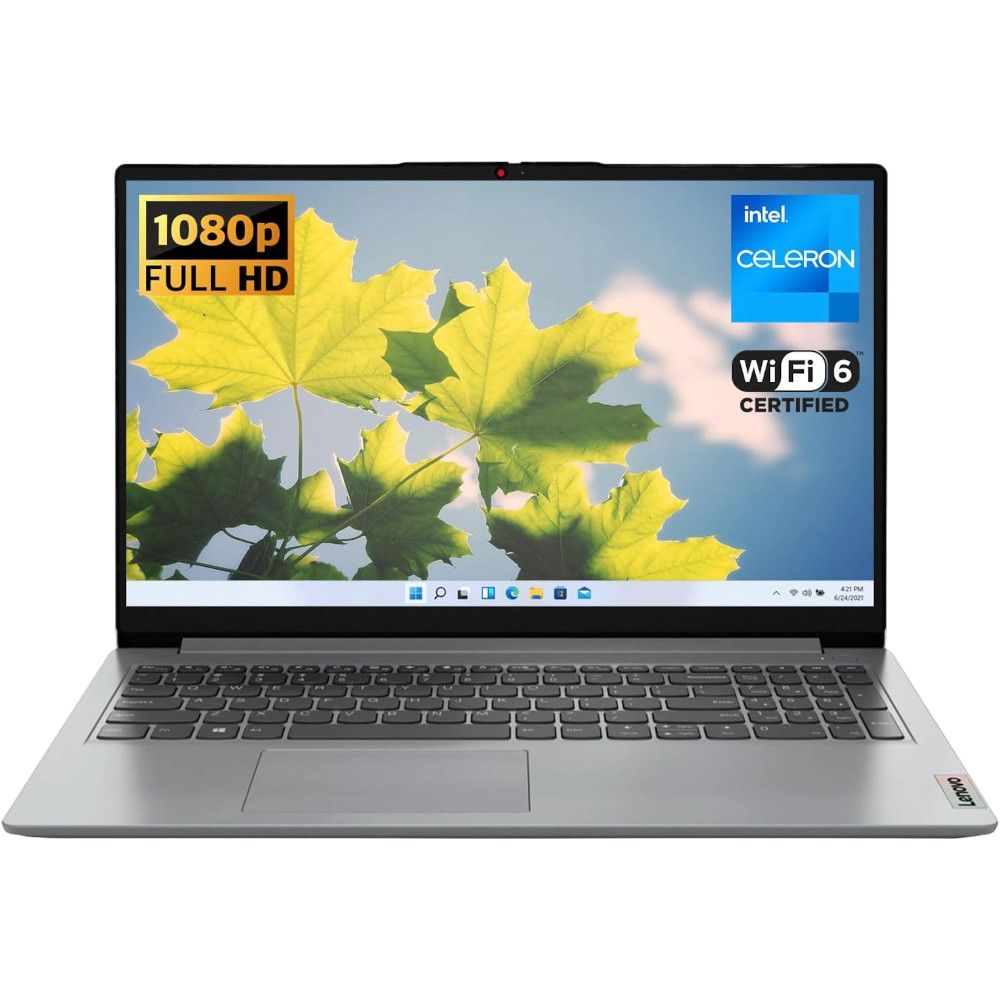

Best Laptop for Kids
Lenovo IdeaPad 1
If you’re looking for a laptop that your kids can grow into, the Lenovo IdeaPad 1 is a perfect companion. It’s affordable, but not underpowered, and features good battery life and a webcam with a built-in privacy shutter.
|
Pros |
Cons |
|---|---|
|
2-in-1 form factor is great for school and relaxation |
Integrated graphics are lacking |
|
Great-looking display |
Only one color available |
|
Plenty of battery life |
|
|
NPU-equipped CPU is future-proof |
Assuming you’re looking at a computer for someone older—college-age, for example—your needs will be vastly different. For this case, you’ll want plenty of power to handle any assignments, plus a 2-in-1 design to make the computer as useful for kicking back and unwinding with a weekend movie as it is for crunching through class work. The Lenovo Yoga 9i 2-in-1 (14-inch Intel) is a perfect candidate.
Each model features an Intel Core Ultra 7 155H CPU, with the highest-end configuration boasting 32GB LPDDR5X RAM and a 1TB M2 SSD. Meanwhile, the base configuration is still quite well-equipped, with 16GB RAM and 512GB storage. Most models run Windows 11 Home, though Pro is also available.
The display is the same on every configuration except for the priciest, with most models featuring a respectable 14-inch, 2880×1800 touch panel with a 120Hz refresh rate. This covers 100% of the DCI-P3 color space and has a standard brightness of 400 nits, alongside HDR500 support. The highest-end model features a higher resolution at 3840 x 2400, but only a 60Hz refresh rate.
The battery features a capacity of 75Wh, which is roughly typical for a laptop in this price range. While the battery life isn’t the most impressive feature of this laptop, it should still be plenty to get through a full day of classes. At worst, you may need to top up midday.
Finally, the Yoga 9i has a bit of an ace in the Lenovo Slim Pen. While this won’t be a perfect match for everyone, any student with art-related projects or more visual note-takers will love being able to draw or write on their screen instead of typing.
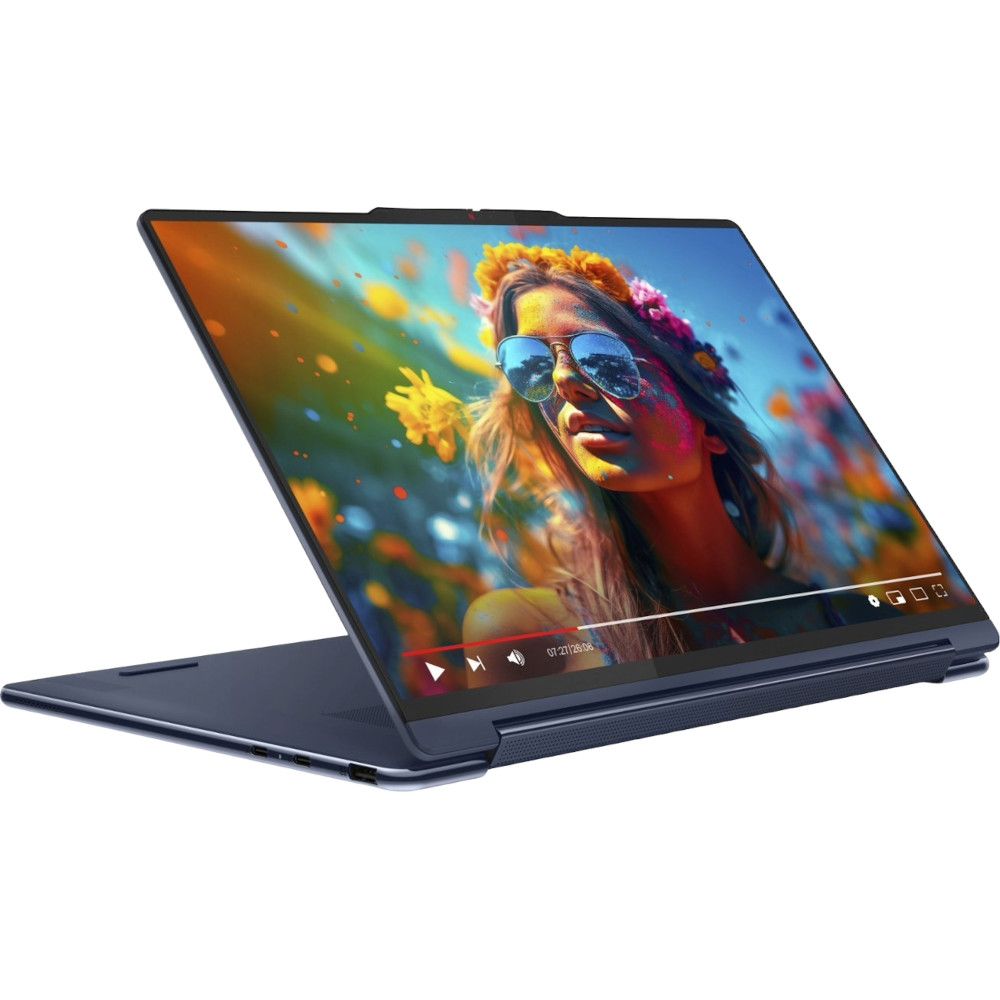

Best Laptop for Students
Lenovo Yoga 9i (2024)
The Lenovo Yoga 9i features a 2-in-1 form factor that lets it work as a laptop or tablet, perfect for classwork and relaxing afterward. It even comes standard with the Lenovo Slim Pen, great for art, design, and other more visually oriented disciplines.
FAQ
How do I clean my laptop’s screen and keyboard?
You can either use a microfiber cloth and screen cleaner spray or pre-packaged screen wipes to clean your screen. For your keyboard, you can use the same technique, but a paper towel lightly dampened with rubbing alcohol will work well for your keyboard too.
Can I use a monitor with my laptop?
Yes, at least in most cases. Many laptops feature HDMI or mini-HDMI ports that let you easily connect to a monitor. Those that don’t feature bespoke HDMI ports often feature a USB-C port that let you connect a monitor, though you may need an adapter or a special cable to make the connection.
Can I upgrade the internals of my laptop?
Sometimes, but this is becoming less common. In some laptops, you may be able to upgrade the SSD storage, or maybe the RAM, but even this is less likely lately. As laptops get thinner and lighter, more and more pieces are soldered in place, and aren’t easily upgradable. Check your laptop’s manual for more details.
How do I take a screenshot on my laptop?
On Windows 10 or Windows 11, you can press and hold the PrtSc key to take a screenshot and save it to the clipboard. Then you can paste it into another app with Ctrl+V. You can also use the built-in Snipping Tool, available in both Windows 10 and 11.
What should I do if my laptop is overheating?
First, shut down your laptop and wait until it has cooled down. Then, try blowing out any vent areas with canned air, being careful not to get too close. Once you’re sure your laptop has cooled down, try turning it on again. If the problem persists, you may need to have it serviced.


